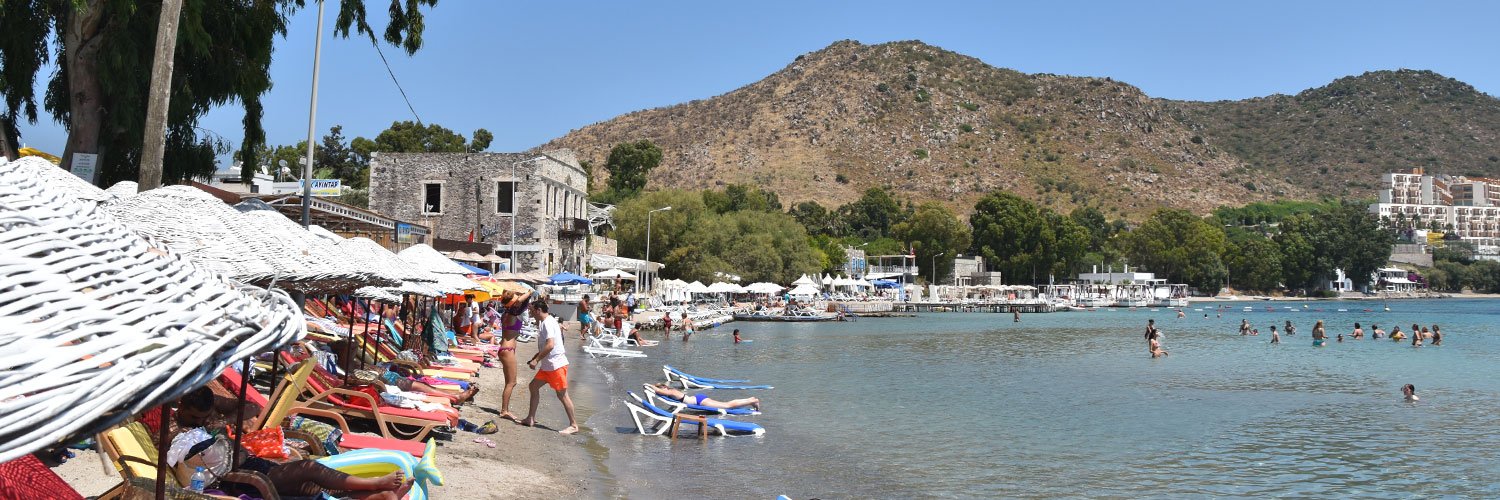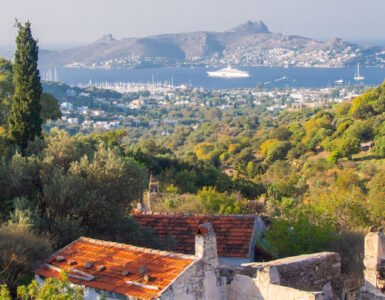Accessing accurate and up-to-date information about weather in Bodrum plays an important role for optimizing your overall travel experience. The weather can significantly impact your travel plans and enjoyment, depending on your travel preferences. Making your plans based on reliable weather data allows you to make better decisions about what to pack and when to go.
Although Bodrum generally has pleasant weather throughout the year, each season has its own characteristics which can limit your activities. If you’re after a sunny beach vacation, obviously you need to avoid the rainy seasons. However, if you are interested in exploring the archaeological sites or hiking trails in the area, it is important to be cautious of the hot Mediterranean sun and high temperatures. These conditions are not ideal for outdoor activities, except for swimming.
Understanding weather patterns can greatly enhance your outdoor activities and sightseeing, providing a more memorable and comfortable experience during your trip. Having insight into the weather in Bodrum is essential for maximizing safety and enjoyment throughout your Bodrum adventure.
In This Article
Weather in Bodrum: An Overview
The weather in Bodrum is famous for its bright sun and high temperatures. However, that reputation holds true during the summer season. In the summer months, from June to September, you can almost guarantee that your leisure time at the beach will go uninterrupted by strong winds or rain showers.
Yet, the Mediterranean climate in Bodrum can be quite unpredictable for the rest of the year. From November to March, weather conditions can change suddenly. Dark clouds can cover the sky in no time, or vice versa. Despite these fluctuations, temperatures generally remain favourable, with occasional chilly days when cold winds blow in from the Central Anatolian Region.
If you plan to travel between September and June, I suggest checking monthly average temperatures for both weather and sea conditions. Around mid-October, the predictability begins to fade away, but it’s still usually hot enough to find many opportunities to enjoy a day at the beach. When November comes, even the most experienced seafarers may find it hard to predict the weather just an hour later.

Starting in November, a traveller should carefully consider the weather in Bodrum. Temperatures rarely drop below 10ºC, but the weather can feel very chilly when moisture meets winds from the east.
In March, sunny days begin to outnumber the cloudy ones. However, this can be misleading. Just when you think it’s a perfect day to wear a t-shirt, the weather can instantly change and leave you searching for shelter.
After March, the sun gets brighter, and the number of sunny days get closer to summertime. Temperatures can reach 29ºC – 30ºC, tempting you to go straight to the azure waters. Just keep in mind that the sea water temperature remains low after cooling over the previous months.
Weather Forecast for Bodrum
As weather data helps you plan your vacation based on your activity preferences, information about weather in Bodrum also helps you ensure your well-being and safety during your stay. In Bodrum, severe weather events like storms and hurricanes are unlikely to occur. However, knowing the expected weather can help you choose appropriate clothing and reduce the chances of health issues like sunstroke or cold.

If you’re already in Bodrum or planning a trip there, the one-week weather forecast can be useful. But if you’re trying to decide the best time to visit Bodrum, it’s better to rely on statistical data, as I’ve also covered on THEBESTOFBODRUM. Forecasts are generally reliable for a few days, but their accuracy decreases as you look further into the future.
There are many internet weather providers that offer forecast widgets for websites. Personally, I’ve been using Weather Widget for years because it’s easy to use. Please note that I have no affiliation with them. As someone who doesn’t know how to code, it was the first one I could manage to place on my website. That’s all!
BODRUM Weather ForcastThe above forecast shows the weather in Bodrum town centre. The temperatures in other towns and villages of the Bodrum Peninsula may vary slightly. For example, in towns like Gumusluk or Yalikavak, which are at the north of the peninsula, summer temperatures are typically 1°C to 2°C cooler. However, the listed temperatures should be sufficient considering the peninsula’s size, which measures around 16 kilometres from north to south.
Understanding Bodrum’s Climate
In elementary school, we learn that Turkey has seven geographical regions: the Marmara Region, the Black Sea Region, the Eastern Anatolia Region, the Southeast Anatolia Region, the Central Anatolia Region, the Mediterranean Region, and the Aegean Region. Elementary school also teaches about the local economy, geography, and climate of each of these regions.

The Bodrum Peninsula is situated in the southwest corner of Turkey, near the intersection of Aegean and Mediterranean regions. The area shows all the typical features of the Mediterranean climate. In my opinion, the weather in Bodrum is better than other destinations in both regions. It is cooler than the Mediterranean Region and warmer than many cities and towns in the Aegean Region.
While the weather in Bodrum is generally hot and sunny during the high season, it becomes unpredictable after summer, particularly between November and March. You may choose to stay indoors due to overhead dark clouds, but within five minutes, the clouds can clear, and the sun shines as brightly as in summer.
Regardless of whether it rains or not, the temperatures in Bodrum are usually pleasant. However, there have been occasions when I have felt an intense cold in my bones. When the northeastern winds bring cold weather from the Central Anatolia, it can become quite chilly, even if the actual temperatures are around 10°C-15°C. Thankfully, based on my experience, this cold spell typically lasts only a few days.
The Four Gods Ruling the Weather in Bodrum
In ancient Greek mythology, there were four gods called Anemoi who represented the winds from different directions. Boreas, the god of the north wind, ruled over cold winter temperatures. Euros, the god of the east wind, brought rain during warmer days. Notos, the god of the south wind, was responsible for the wet and stormy weather of late summer and early autumn. Finally, Zephyrus was the god of the west wind and associated with the arrival of spring.
Even today, Boreas and Notos play important roles in the weather of Bodrum.
Boreas is the north-easterly wind which we call poyraz in Turkish. It brings the cold weather from the inner parts of Anatolia basin, where the continental climate is effective. With the arrival of Boreas, a chill descends upon the town. When the cold meets the humidity of the coast, people go indoors, leaving the streets empty.

Notos is a south-westerly wind, referred to as lodos by locals. It brings warm weather from the Mediterranean Sea but can also bring strong winds and large waves that threaten boats and coastal buildings. The waves can reach a height of two meters or more, causing significant damage to structures, vehicles, and boats along the coastline.
Meeting the Gods: Boreas and Notos
While these winds are an integral part of the weather in Bodrum, they are not frequent. However, if you encounter the north-eastern wind, be prepared with warm clothing such as trousers, sweaters, and thick coats. But don’t forget to pack some shorts as well, as the weather can change unexpectedly.
If you find yourself in a strong south-westerly wind, it may be intimidating at first, but there’s no need to worry. Just be cautious of the waves and flying debris, and make sure to wear a raincoat and boots to protect yourself from the rain and splashing waves. It can actually be a great opportunity to capture some amazing photos on the seashore.
Overall, the winds of Bodrum can have a significant impact on the weather in Bodrum, but with proper preparation and precautions, you can still enjoy your time and make the most of your visit.
















Add comment